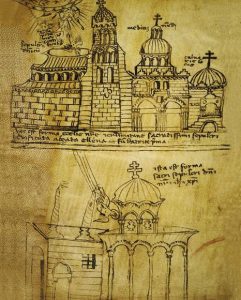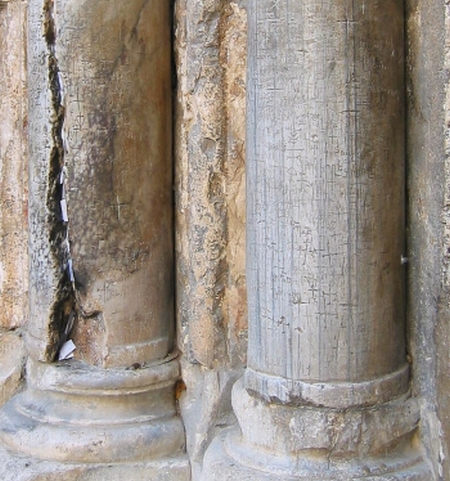Welcome back! Lately we’ve been looking at “Jerusalem moments”—wonderful little moments in medieval pilgrims’ journey to Jerusalem that give us insight into our own faith. Today’s moment will sound familiar to anyone who grew up in church or who has been a youth group leader—it’s the first church lock-in.

For medieval pilgrims, the highlight of their journey to Jerusalem was a visit to the Church of the Holy Sepulcher. But it wasn’t just any visit. For three nights, pilgrims were voluntarily locked into the church for an all-night vigil. The Muslims in charge (remember that Jerusalem was held by the Mamluk sultans during the fifteenth century) actually locked the door to the church from the outside and let the pilgrims out in the morning. Lock-in!
The vigil included a guided tour of sacred sites in the Church of the Holy Sepulcher, such as the Chapel of the Virgin, the Chapel of the Invention of the Cross, and the Sepulcher itself. A Franciscan friar would guide the pilgrims, who held candles, in a procession. The vigil included free time for private devotions and a meal. Masses began at midnight and concluded at dawn, after which the pilgrims were booted out of the church.

Friar Felix Fabri, a late fifteenth-century pilgrim, writes of misdeeds that occurred during some of these vigils. By the third night, devotion and behavior had deteriorated. Some pilgrims drank, caroused, and slept; they bought and bartered for trinkets; they carved and painted their names on the walls. One pilgrim stretched out on the sepulcher itself. Fabri writes:
The hand of the Lord was laid upon him, and struck him with the palsy, so that his body began to grow stiff, and he could in no wise raise himself up. . . . he never thereafter recovered the free and natural use of his limbs, returned to his home lame and sickly, and died a paralytic! It is a wonder that he did not perish on the spot.*
That sounds far worse than a youth group lock-in. Yet we should also remember that it was during one of these vigils that Margery Kempe reports having a vision of the crucified Christ:
And when, through dispensation of the high mercy of our Sovereign Saviour Jesus Christ, it was granted this creature to see so vividly his precious tender body hanging upon the cross . . . then she fell down and cried out with a loud voice, writhing and twisting her body amazingly from side to side, spreading her arms asunder as if she would have died. Nor could she prevent herself from crying, nor control these bodily contortions, because of the fire of love that burnt so fervently in her soul with pure pity and compassion.**
Margery’s vision reminds us that the vigil was designed to bring pilgrims closer to Christ. It was a kind of resurrection – three nights locked in the tomb with Jesus, after which the pilgrims hopefully emerged, in a kind of re-birth, into the light.
A few years ago, my church held an all-night prayer vigil (the adult version of a lock-in). Each person signed up for hour-long slots (or longer), some in the dead of night, to pray alone in the church. Being alone in a room with Jesus for one hour of the night is challenging, especially if you’re not used to it. It makes me rethink the pilgrims’ vigils. What would you do if you were locked in the tomb with Jesus for three nights? Would you succumb to sleeping? Ask for a vision? Is it just possible that you might emerge reborn?
*The Book of the Wanderings of Brother Felix Fabri, vol. 2, part 1, trans. Aubrey Stewart (London: Palestine Pilgrims’ Text Society, 1896), p. 84.
**The Book of Margery Kempe: An Abridged Translation, trans. Liz Herbert McAvoy (D. S. Brewer, 2003), p. 38.